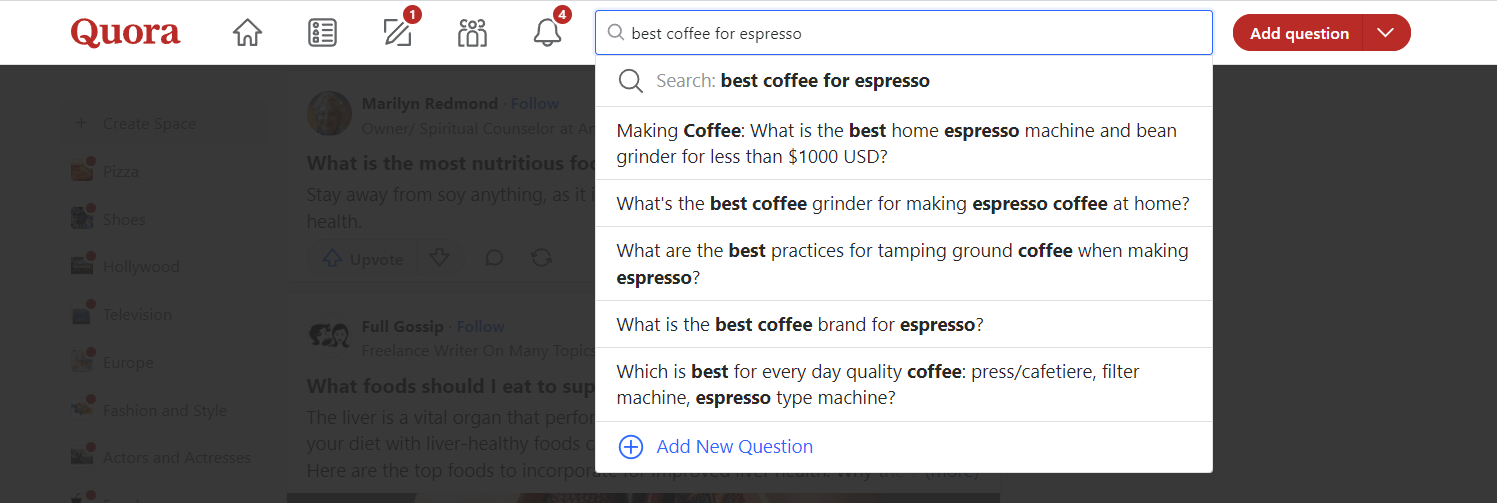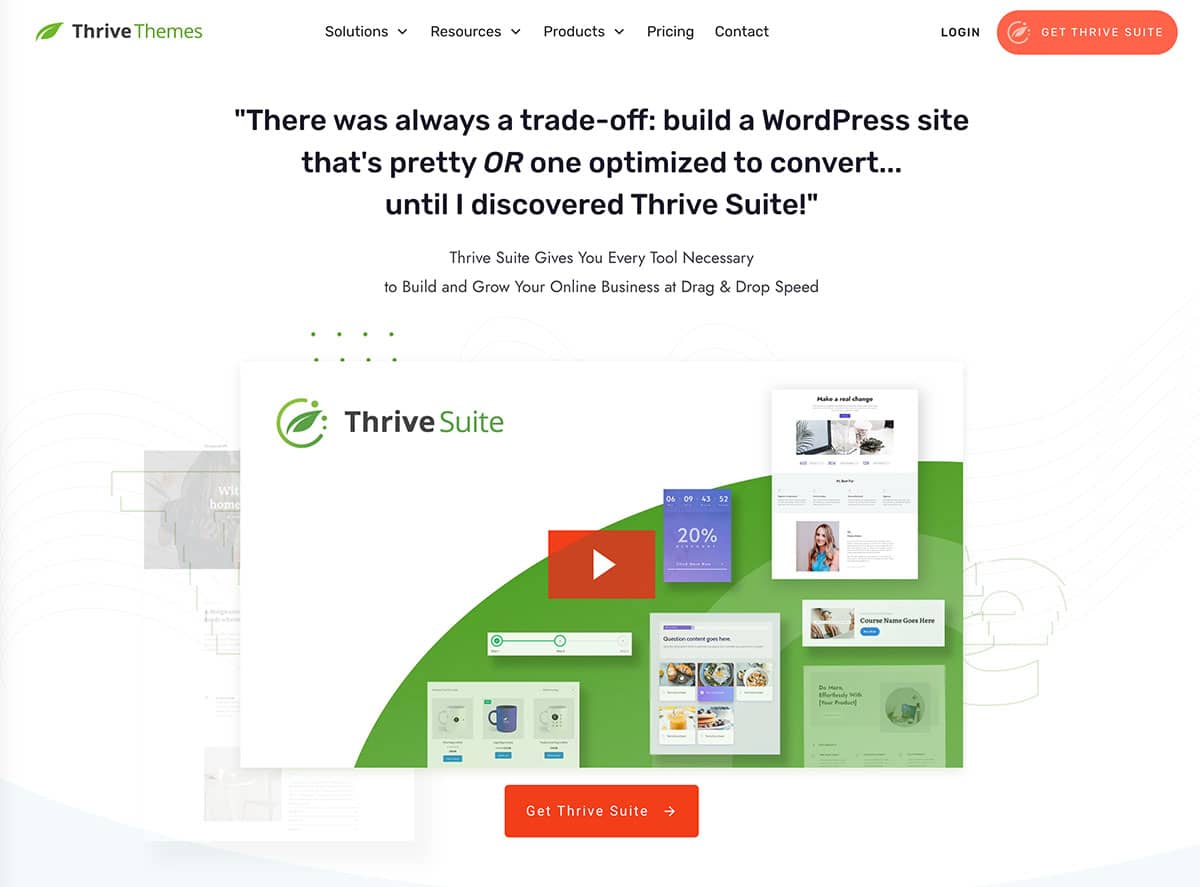Are you struggling to find the best keywords for your blog posts?
We can help.
Running a business is tough – we get it. And when you’re building on a tight budget it can be even tougher.
If you’re struggling to figure out how to get your target audience to find your website organically, but don’t know where to start – this is the guide for you.
Keyword research is the foundation of a successful SEO-driven content strategy, and you’re about to discover how to get started with ease.
Keep reading to learn 7 simple keyword research tips to create content search engines and your readers will love.
Why is Keyword Research So Important?
Keyword research plays a vital role in content marketing and search engine optimization.
If you want your target audience to find your content on search engine results pages (SERPs), you must use the right keywords.
This SEO strategy also helps you understand the specific keywords your target readers are searching for, and the questions they’re asking.
With the right keyword research tools, you can see the specific terms people use when searching for content and products related to what you offer.
This knowledge can help you proactively create content to address your target audience’s needs and challenges.
Understanding Keyword Research and Search Intent
Keywords tell you 'what' people are searching for, search intent tells you 'why' they are searching.

Remember, you aren’t just writing for search engines. You’re writing for the people who use search engines to find answers. So, you must ensure that your content is relevant to their needs.
Search engine algorithms prioritize matching people’s search queries with content that answers their questions and fulfils their intent.
There are four types of search intent:
Navigational intent: a user wants to find a specific post or page (e.g. Thrive Themes login)
Informational intent: a user wants to learn more about a topic (e.g. How to Start an eCommerce Store with Thrive Suite)
Commercial intent: a user wants to conduct more research before making a final purchase decision (e.g. Divi vs Elementor vs Thrive Architect)
Transactional intent: a user wants to take a specific action, usually making a purchase (e.g. buy Thrive Suite)
There’s different content that works best for every type of search intent.
For example, if your keyword is “best digital marketing tools for yoga business” you aren’t going to create a How-To Guide or a tutorial as a piece of content.
You’ll want to do a product comparison post, outlining the differences between several digital marketing tools, so your readers can get a clear idea on the best option for their needs.
7 Keyword Research Hacks to Create Relevant, SEO-Friendly Content
Whether you're completely new to SEO, or feel like you need to return to the basics to improve your current content, there's something for you to learn from this guide.
We’ve condensed everything you need to know into 7 actionable tips you can use to find the best keywords and create content that can be found organically.
1. Brainstorm Relevant Topics Related to Your Business
This is the starting point of your keyword research process.

Start by listing the main things you sell or do.
For example, if you sell coffee, some of your topics could be "roasted beans" or "iced coffee ideas". Think about everything, even small details, because these lead to good keyword ideas.
Next, think like a customer. What would you want to know?
Continuing with the coffee example, a customer might ask questions about “the best brewing methods” or “how to use a French press”.
You can also use tools like Google Trends and Answer the Public to find relevant keywords, questions, and topics to start with.
2. Use Google Suggest (Autocomplete) to See What People Are Searching
Google Suggest is a goldmine for understanding what your target audience is searching for.
When you type in the Google search bar, this tool suggests popular search terms based on what other users frequently search.

These suggestions help you understand the interests and queries of searchers, related to your industry. For example, if you're in the coffee business and you start typing "best coffee for...",

Google might autocomplete with phrases like "best coffee for cold brew" or "best coffee for espresso." These are direct indicators of what people are curious about in your industry.
Once you get a suggestion that looks promising, click on it and see where it leads in terms of further autocomplete suggestions. This can help you uncover long-tail keywords and potential keyword phrases that are less competitive and more targeted.
You should also check out the "People also ask" section in Google search results for related searches.

3. Use a Keyword Generator to Find a List of Keywords Related to Your Topics
Keyword generators are designed to take a base topic and pull up search terms users are actively typing into search engines.
For instance, inputting "coffee" might return terms like "coffee beans," "best coffee brands," and "how to brew coffee at home."
We recommend using WPBeginner’s free Keyword Generator Tool to find useful keywords for your content strategy.
Plug in a keyword and this tool will generate a long list of potential keywords you can use in your content.

4. Analyze Forums and Q&A sites to See What Your Target Audience is Asking
Forums and Q&A sites like Reddit and Quora contain a lot of genuine questions and discussions initiated by your target audience.

By sifting through the discussions related to your industry, you can uncover potential keywords and also gain deeper insights into the pain points and goals of your potential customers.
Start by identifying popular Q&A sites in your industry. Next, browse through them take note of common topics and questions.
This research will also make it easier for you to understand your audience and write authentic content that resonates with them.
5. Use Google Keyword Planner to Conduct Keyword Search & Analysis
Google Keyword Planner was initially designed for PPC campaigns, but this tool doubles up as a useful keyword explorer.
Use this tool to identify new keyword suggestions and discover in-depth metrics about those keywords.

After you've brainstormed an initial list of potential keywords, create your Google Ads account, and feed them into the Keyword Planner.
This tool displays data like average monthly search volume, competition and keyword difficulty.
For example, looking up a particular keyword — "coffee brewing methods" — might reveal a high search volume with medium competition, suggesting its a popular topic that has some competition.
You can use this tool to identify low-competition keywords, too.
Google Keyword Planner also suggests additional, related keywords you might not have considered.
Lastly, you can filter keyword ideas based on location and language to target specific audiences and generate more organic traffic.
6. Study Your Competitors & Analyze Competitor Keywords
Competitor analysis involves identifying key players in your industry and observing their online content to find their target keywords.
This helps you identify gaps in your own strategy and even shows you high-value keywords you’ve overlooked.
However, manual analysis can take a lot of time.
SEO keyword tools like Ahrefs, Moz, SEMrush, and Ubersuggest can help streamline this process.

These platforms can show you popular keywords your competitors rank for, the quality of their backlinks, their domain authority, and even the structure of their on-site SEO.
Keeping tabs on the competition helps you adapt and refine your keyword strategy, so you don’t fall behind.
Most of these SEO tools offer free keyword research features to help you get started.
7. Create Topic Clusters to Organize Content Around Your Main Keywords
Think of topic clusters as a central hub from which various related subtopics branch out.
Your primary article acts as the anchor, with secondary articles linking back to it.
To create a topic cluster, start by pinpointing a core keyword that's broad and relevant to your business. Example: “How to Make Great Coffee At Home”.
Next, identify smaller, related keywords to serve as the focal points of your sub-articles, like "Choosing the Perfect Coffee Beans", “X Best Coffee Brewing Methods” and "How to Use a French Press".
These specific articles should link back to your main pillar content, creating a web of related information.
This setup helps in two ways: first, it makes it easy for your readers to find related topics on your site; and search engines can recognize you as an expert on this topic.
From a content creation perspective, this strategy makes it easier for you to plan content and ensure you’re meeting your SEO goals at the same time.
Next Steps: Write Your First Blog Post
After conducting SEO keyword research, you’ll have a good selection of keywords to use in your blog posts. Now it’s time to start writing.
Consistency is also a part of working towards getting your content on the first page of SERPs.
Use these free tutorials to help you write engaging, SEO-friendly blog posts:
Turn Your Site Visitors into Leads and Customers
Now that you have what you need to conduct effective keyword research and get more traffic through organic search.
Next, you need to focus on turning these site visits into conversions.
Remember, driving traffic to your site is important, but the main goal is to convert that traffic into leads and, eventually, paying customers.
Your website design needs to be user-friendly and focused on directing your visitors to take action. To achieve this, you need the right tools.
We recommend using Thrive Suite to get the job done.
Thrive Suite is the best WordPress plugin bundle to use to turn your traffic into engaged leads and customers.
For a steal of a price, you can:
- Create a user-friendly website design your visitors will love
- Design clean, SEO-friendly posts and pages that look great
- Set up lead-generation forms to promote your irresistible free offers
- Build engaging quizzes to get to know your audience & direct them to relevant content
- Create & sell online courses and other digital products
- Seamlessly collect, manage, and display glowing testimonials and reviews
- …and so much more
The best part?
You don’t need to be an expert coder or web designer to use these tools. Thrive Suite comes with drag-and-drop functionality and hundreds of templates to help you design the perfect website for your business.



